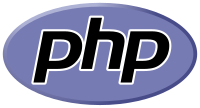Why Use a PHP Framework?
Imagine building a house from scratch every time you wanted a new one. Sounds exhausting, right? Well, that’s exactly what happens when you write PHP code without a framework!
PHP frameworks are like pre-built LEGO sets for developers. Instead of reinventing the wheel, you get tools, structures, and best practices to build apps faster and more efficiently. Let’s dive into the magic world of PHP frameworks!
Step 1: What is a PHP Framework?
A PHP framework is a collection of libraries and tools that help developers: Organize code better, Follow best practices (MVC, routing, templating, etc.), Avoid writing repetitive code, Secure applications more easily.
Some of the most popular PHP frameworks include:
- Laravel – The cool kid with all the fancy features
- CodeIgniter – Lightweight and speedy
- Symfony – Enterprise-grade and powerful
- Yii – Fast and secure
- Zend Framework – Great for complex applications
Step 2: Setting Up a PHP Framework
Let’s pick Laravel (because it’s awesome) and set it up!
Installing Laravel (The Easy Way)
Make sure you have Composer installed. Then run:
composer create-project --prefer-dist laravel/laravel my_project
Navigate to your project folder:
cd my_project
Start the development server:
php artisan serve
Now, open http://127.0.0.1:8000 and BOOM! Your Laravel app is live!
Step 3: Understanding the MVC Pattern
Most PHP frameworks (especially Laravel) use the Model-View-Controller (MVC) pattern. It’s like a restaurant:
- Model – Deals with data (the kitchen)
- View – Handles UI (the menu & food presentation)
- Controller – Manages logic (the waiter)
Example: Creating a Simple Page
Create a new route in routes/web.php:
Route::get('/hello', function() {
return 'Hello, World!';
});
Now visit http://127.0.0.1:8000/hello – You just made a page!
Using Controllers
Create a controller:
php artisan make:controller HelloController
Edit app/Http/Controllers/HelloController.php:
namespace App\Http\Controllers;
use Illuminate\Http\Request;
class HelloController extends Controller {
public function greet() {
return "Hello from a controller!";
}
}
Update your routes in routes/web.php:
Route::get('/hello', [HelloController::class, 'greet']);
Now visit http://127.0.0.1:8000/hello again!
Step 4: Using Models and Databases
Most apps need a database. Let’s set up one in Laravel.
Configure Database
Edit .env file and update the database settings:
DB_CONNECTION=mysql
DB_HOST=127.0.0.1
DB_DATABASE=mydatabase
DB_USERNAME=root
DB_PASSWORD=
Run database migrations:
php artisan migrate
This will create default Laravel tables automatically!
Creating a Model
php artisan make:model Post -m
This creates a Post model and a migration file. Update the migration file in database/migrations/xxxx_xx_xx_create_posts_table.php:
public function up() {
Schema::create('posts', function (Blueprint $table) {
$table->id();
$table->string('title');
$table->text('content');
$table->timestamps();
});
}
Run the migration:
php artisan migrate
Now, you have a posts table!
Step 5: Building a Simple CRUD App
Insert Data
Edit routes/web.php:
use App\Models\Post;
Route::get('/create', function() {
Post::create(['title' => 'My First Post', 'content' => 'This is awesome!']);
return 'Post created!';
});
Visit http://127.0.0.1:8000/create – It just added a post to the database!
Retrieve Data
Route::get('/posts', function() {
return Post::all();
});
Visit http://127.0.0.1:8000/posts to see your posts.
Update Data
Route::get('/update', function() {
$post = Post::first();
$post->title = 'Updated Title';
$post->save();
return 'Post updated!';
});
Visit http://127.0.0.1:8000/update to update the post.
Delete Data
Route::get('/delete', function() {
Post::first()->delete();
return 'Post deleted!';
});
Visit http://127.0.0.1:8000/delete to remove the post.
Congratulations! You now: Understand PHP frameworks, Know how to use Laravel, Can build a simple CRUD app, Saved yourself from writing tons of boilerplate code.


0 Comments:
Posting Komentar